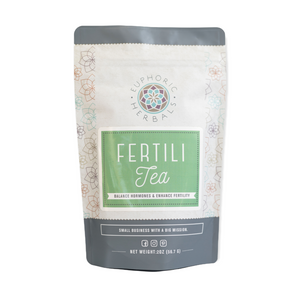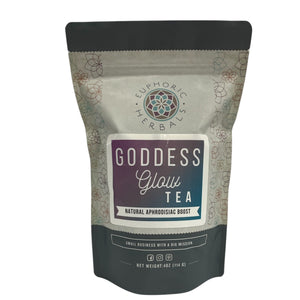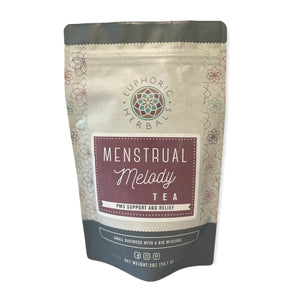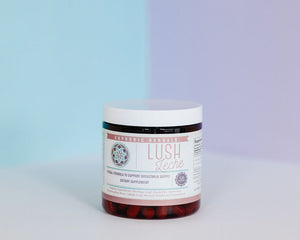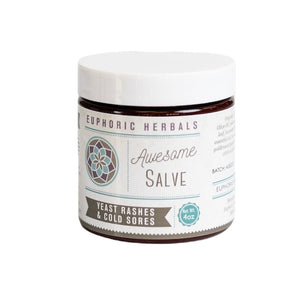Supplementing is where you give your baby formula and breast milk. It’s quite safe to do, and most families choose a combination feeding style. This can happen because of necessity (you’ve got a low milk supply), convenience (you want to go back to work), or personal choice. Sometimes, supplementation is recommended by your doctor because of medical conditions.
Reasons to Supplement with Formula
The WHO (World Health Organization) and AAP (American Academy of Pediatrics) do recommend that moms breastfeed exclusively for about six months or so. Then, they should continue breastfeeding for a year or more while introducing solid foods.
Of course, you also have to take into consideration cost and emotions. Your body is going through a lot of changes, and your brain and mind are too. Plus, it can be quite expensive to miss work for up to a year while breastfeeding. Therefore, supplementing with formula might be necessary or more convenient. However, it doesn’t make it any easier to decide to do this.
Many moms choose to give formula and breast milk because they want to do so. However, others have to for various reasons. Understanding what these reasons are can make it easier to decide if supplementing with formula feedings is right for your baby and you.
Medical Issues
If your baby was born with a medical condition or prematurely, she is likely to need more than just breast milk. The formula is often full of extra vitamins and minerals that your baby needs to gain weight rapidly and safely.
Low Breast Milk Supplies
Some women cannot produce enough breast milk to feed their babies. This might be caused by medical conditions or breast surgery in the past. However, you may no significant issues and still experience low supplies. Your doctor might recommend that you supplement with formula if your baby doesn’t get enough nutrition through breastfeeding.
Off Maternity Leave
Maternity leave is a great thing, but all women don’t get it. Often, those who do find that it isn’t enough. You can’t take off work for a whole year after giving birth so that you can breastfeed.
Though you can use a breast pump to extract the milk between feedings, it might be stressful or challenging to do. Likewise, you may not have any stored breast milk in your freezer. If you must return to work and have no other sources, then formula may be the next best thing.
Participation by Others
If you have a significant other or older children, they might also want to feed the baby. Not only does this help them create a bond with the new member of the family, but it will also take some of the work off of you and give you a break. Of course, you can choose to pump breast milk and use that. However, you can also let your partner and the other kids give the baby a formula bottle every so often.
Multiple Babies
With twins or triplets, it can be quite a challenge to exclusively breastfeed. Of course, you will have to build up and maintain your supply of breast milk, which is difficult to do with just one baby, let alone multiples. However, you’ll also breastfeed more often. Sometimes, you might need a break throughout the day (both mentally and physically.) Formula feedings can help you do that.
You Want To
Sometimes, you just want to supplement with formula a few times a day or week. If that’s the case, then that is a great choice for you and your baby.
When Your Doctor Might Recommend Supplementing
Almost all doctors will recommend that you breastfeed exclusively. With that said, there are times when a physician will ask that you supplement with formula. This can happen if:
- Your baby gains or loses weight slowly after their first few days of life
- The newborn loses 10 or more percent of their body weight within the first few days of their life
- Your baby is highly fussy and doesn’t appear satisfied after eating
- The newborn urinates less than six times in one 24-hour period
When and How to Introduce Formula

If you want to supplement with formula, but it’s not because of a medical reason, experts do recommend that you breastfeed for one month before starting your newborn on formula.
When you wait for about four weeks, this gives you more time to build up your breast milk supply. This ensures that the baby breastfeeds well. Then, you can slowly introduce formula into the mix.
Before you choose an infant formula for your baby, you should talk to a pediatrician. Many doctors will recommend a formula that is fortified with iron during their first year.
However, you should pay close attention to your baby when you first introduce formula to them. They could develop a rash, diarrhea, vomiting, fussiness, gas, and excessive crying. These signs could indicate an allergy. If any of these happen, stop using that formula immediately and call your baby’s doctor. He or she can recommend other formula options.
Supplementing is going to be a significant change for you and your baby, especially if you’ve been breastfeeding exclusively. Therefore, consider these strategies to help with that transition:
Feed Formula and Breast Milk Separately
It is okay to put formula and breast milk into the same bottle if the formula is already prepared. However, if you mix them, you could be wasting your breast milk. Your baby might not finish the entire thing. Therefore, it might be best to give your baby some breast milk first and then finish off the feeding using the formula.
Due to safety reasons, you shouldn’t combine breast milk and concentrated or unmixed powdered formula.
Start with a Couple of Bottles a Day
Your body produces breast milk based on supply and demand. Therefore, when you introduce formula to your baby, it could affect the amount of breast milk you make each day. If you plan to supplement with one or two bottles of formula a week, that won’t adversely affect the supply. However, if you’re giving your baby two bottles of infant formula each day, your breast milk supply is likely to drop.
Add More Bottles Slowly
You might be tempted to give your baby a lot of formula bottles at once to help them acclimate faster. However, this causes a host of problems. For one, it is likely to upset your baby and might make them fussier or develop stomach problems. However, you may also suffer from blocked milk ducts and breast engorgement. Take it slow to avoid these issues.
Consider Hand Expressing or Pumping
Both hand-expressing and pumping can help you keep your milk supply up. Plus, they can prevent a variety of common breast problems that can happen when you bottle-feed instead of nursing. You’re still removing your breast milk, which will relieve the fullness and prevent breast engorgement. However, you can store that milk and use it later in bottle form. Breast milk can last up to a year if stored in the freezer correctly.
Ways that Formula Addiction Can Affect Your Baby
If you’ve primarily been breastfeeding and add formula to their diet, you may notice a few things. These can include:
Refusal of the Bottle
Initially, your baby might refuse to eat from the bottle, especially if it is you that gives it to them. Often, the transition will go more smoothly when you have a caregiver or your partner offer the baby the formula.
While some babies just want milk from their mom, some find it hard to use the bottle. It is different than the breast. Likewise, your baby might dislike the taste of the infant formula.
Wait Longer
Breast milk is much easier for your baby to digest than formula because the latter helps your little one feel fuller for a longer period. Therefore, they are less likely to be as hungry after being fed formula as they will after breastfeeding.
Refusal of the Breast
After a while, your baby is less likely to refuse the bottle. They will get used to drinking from it and get to like the formula. However, the reverse could then become an issue. They may no longer want to nurse. It is harder for them to drink from the breast. Therefore, some babies find that formula is more satisfying.
Bowel Changes
When you add formula to your little one’s diet, you may find that their bowel movements change. The pattern, consistency, and color may be different. For example, it might be darker or lighter in color, firmer, and have a more pungent odor. Also, your baby may have less frequent movements once you introduce formula.
Tips for Introducing the Bottle
If you’re worried that your baby won’t take to the bottle easily, there are things you can do to make the transition easier. These include:
Similar Feeding Experiences
The key here is to ensure that your baby likes both breast milk and formula. To do that, you need to be consistent. As you would switch between breasts, make sure you switch sides while formula feeding. You should also burp them between sides, just like you would with the breast. It can also help to have skin-to-skin contact. Touch your baby’s face or even raise your shirt while giving them the bottle.
Don’t Obsess about Quantity
You will find it much easier to see how much your baby is eating when you use a bottle. However, you shouldn’t obsess about how much formula or breast milk they are getting. They’re going to eat when they are hungry and stop when they are full. The ultimate goal is that your baby gains weight appropriately instead of being fixated on whether or not they’re eating the same amount of formula and breast milk.
In fact, they probably won’t eat the same amounts. Formula tends to be more filling, so they might eat less of it. They’ll nurse longer because the liquid isn’t as thick as the formula.
Trust Yourself
You’re going to find that everyone has an opinion about your decision to supplement. Some may agree with you while others tell you that it’s the wrong choice. It doesn’t matter what anyone else thinks – even family members. When you think it’s time to introduce formula, that is the best time to do it.
That being said, you should talk to your baby’s pediatrician to make sure that they agree that formula is the right choice at this time. Also, they can recommend a good brand and help you decide what to look for in a formula.
Consider a Supplemental Nursing System (SNS)
An SNS allows you to give your baby formula while appearing to nurse them. The formula will travel along a flexible, thin tube that’s taped along the breasts. It finishes at your nipples. That way, the baby will suck on the breasts like normal and will receive any breast milk you do produce, as well as the supplemental formula.
This is beneficial for many reasons. Your baby doesn’t develop a preference to the bottle, but you also continue producing enough milk.
To Mix or Not
While we talked about this a little earlier and found out it’s not a good idea to mix the formula and breast milk, there is one exception. Your baby may dislike formula at first and refuse to eat it. If that happens, you can add a little breast milk to it to help them get used to the formula’s taste. With time, you can add less and less breast milk until it’s just the formula.
It is advisable to talk to your pediatrician before you decide to mix in breast milk. Though your doctor may think it is a good idea, there could be other considerations or issues that you are unaware of.
Conclusion
Every parent’s goal is to have a healthy, happy baby that grows and thrives. While breastfeeding exclusively is excellent, it might not be desirable or possible for you. However, breastfeeding isn’t an all-or-nothing situation. Every situation and baby is unique; a combination of formula and breastfeeding might be ideal for your family. Please fill out the contact form below to get more helpful information.






















































